Amy Claire Mills is dismantling ableism – one quilt at a time
Amy Claire Mills.
Amy Claire Mills is Sydney-based artist living and working on unceded Gadigal and Wangal land. Her practice explores identity and self-preservation through immersive installations and performance, by which she becomes both the artist and subject. Her practice critiques and examines the politics surrounding the female disabled body. Using distinctive, colourful and bold mediums, her work encourages audiences to challenge their own paradigms and internalised preconceived bias, with the ambition of deconstructing ableism.
This conversation took place in February 2021 on the occasion of Amy’s Firstdraft exhibition Unsolicited Advice!; and her new Firstdraft Close Contact commission Burden of Proof for No Show at Carriageworks.
Firstdraft: Stepping into your exhibition, audiences are immediately immersed in the scale and detail of your work, like being wrapped in a warm blanket. How do you conceptualise these spaces of encounter – can you talk specifically about the place of friction and tactility in your practice?
Amy Claire Mills: My practice has layers of intention. When you walk into the exhibition you are instantly drawn in by the colour and tactility, then you begin reading the text, next you think about the materiality, lastly you observe the time, effort and detail. I want all elements to be obvious but you have to take time in the space to see them. The exhibition aims to replicate noise, how invasive, uncontrollable and extreme ableism can be.
FD: There is a tension between comfort and discomfort within your work – both your own and that of the audience. Can you speak more on this relationship?
I believe that the act of dismantling ableism needs to come from this liminal space. The space between comfort and discomfort, hopelessness and understanding. It is only when we are in this state of flux that we can come to comprehend something. When people come into the space I want them to feel everything! I want it to be so overwhelming that for days, weeks, even years later you are still thinking about the exhibition and how your actions can lead to a more inclusive society. I know within myself I am still unlearning the ableist narratives I was taught, it takes time and hard work.
Amy Claire Mills, Unsolicited Advice!, 2021, installation view, Firstdraft, Sydney. Photo: Zan Wimberley.
FD: How has your practice transformed the way you relate to the unsolicited advice you receive as a woman with disability?
ACM: When I started this project it was a bit of a joke. I was laughing with some friends about all the ridiculous advice I have received. But the more I sat with the idea the more dangerous it felt.
As a disabled woman your body is always being judged on its performance and image. If you don’t live up to people's expectations of what's ‘normal’ then it must be because you haven’t found that miracle cure yet or you're just not trying hard enough. Why as a society do we try to feel the need to fix, change or safe disabled people? The social model states: People are disabled by barriers in society, not by their impairment or difference. So please stop trying to cure me and let’s do the work to reorganise society and dismantle ableism.
“I believe that the act of dismantling ableism needs to come from this liminal space... It is only when we are in this state of flux that we can come to comprehend something.”
Amy Claire Mills, Do I Need To Manage Your Grief?, 2019, Mixed media textiles, 203 × 191 cm. Courtesy the artist.
FD: Who are some of the artists or figures who inspire you? And whose bed/s would you love to see your quilts and pillows on?
ACM: Sharona Franklin (paid.technologies), HTML Flowers, Jaklin Romine, Bailee Lobb, Dennis Golding, Betty Grumble, Justene Williams, Katy B Plummer, Erin M. Riley, Sheila Hicks, Mary Lee Bendolph (Gee Bend Quiltmakers), and Pia Camil.
I would like to see my quilts on the beds of major institutions. Some of the art galleries across Australia and beyond have a long way to go in terms of accessibility and representation.
Amy Claire Mills, Bitch Quilts: Isolation Bitch, 2020, mixed media textiles, 70 × 87 cm. Courtesy the artist.
“Some of the art galleries across Australia and beyond have a long way to go in terms of accessibility and representation.”
FD: Your work for Carriageworks is two more enormous quilts, hung so that the questions sewn into them face each other. What do these quilts say, and overall, how do you settle on the texts and phrases in your work?
ACM: One says ‘What’s wrong with you?’, while the other says ‘Are you sure it’s not just in your head?’
I selected these two phrases because I wanted the piece to feel like a conversation was going on, just without any disabled voices being represented.
When I make work I extract from my own experiences and from those within the disability community. I like to highlight the absurd! When you breakdown and bring attention to how people communicate, you begin to see how established and structural ableism is across our society.
Amy Claire Mills, All Art Resists Loss, 2016, mixed media installation & Performance, duration variable. Photo: Chrissy Hall. Courtesy the artist.
FD: What advice – unsolicited or otherwise – would you give someone who is hoping to improve the way they communicate about disability, or how they encounter and hold space for people with disability?
ACM: Don’t assume anything! Everything you thought you knew, you don’t. Because you have been taught by people who have spoken over disabled voices for far too long. Disability is a spectrum, so don’t try and use a one size fits all approach. Amplify, listen, ask consent and support! When spaces hold exhibitions for disabled artists, reach out and ask their access needs, don’t make the onus on the disabled person to fix your shit.
“Disability is a spectrum, so don’t try and use a one size fits all approach.”
Amy Claire Mills, Unsolicited Advice!, 2021, installation view, Firstdraft, Sydney. Photo: Zan Wimberley.
“When you breakdown and bring attention to how people communicate, you begin to see how established and structural ableism is across our society.”
Amy Claire Mills, Drug Companies Invent New Cures Every Day!, 2019, mixed media textiles, 219 × 168 cm. Courtesy the artist.
Amy Claire Mills, Unsolicited Advice!, 2021, installation view, Firstdraft, Sydney. Photo: Zan Wimberley.
FD: Where to next? What projects and plans do you have for the immediate and longer future?
ACM: After No Show at Carriageworks, I have some work for International Women’s day with my art collective New Moon.
Longer term I think I want to start looking at some residencies this year within Australia maybe even NZ if things go okay for the second half of the year.
FD: Why did you become an artist?
ACM: Growing up I never saw art as a possibility for a career. My life was hospitals and doctors waiting rooms. This sounds shocking to say but I honestly didn’t believe I would live long enough to have any sort of career. I got a gold star for waking up every morning. When I started studying art it kinda felt like this was always where I was meant to end up. Art isn’t an easy career choice, you have to choose it daily with intention, sacrifice and patience.
FD: Do you have a favourite or particularly memorable exhibition that you saw at Firstdraft, and why?
ACM: Jodie Whalen’s exhibition Declaration of Love. That work was so transformative, to make a work about love and devotion, I honestly found it very radical. The space was both theatrical yet intimate.
Another favourite was A Summit Wouldn't do Without You (Dreaming the Dream) by 110%. I loved their series of public dreaming workshops alongside the exhibition. I love that Firstdraft goes beyond the limits of a traditional gallery. Every exhibition you see there is completely unique.
“Growing up I never saw art as a possibility for a career.... This sounds shocking to say but I honestly didn’t believe I would live long enough to have any sort of career. I got a gold star for waking up every morning.”
FD: Who or what are you listening to, watching, reading? How do you stay connected – or how do you disconnect – in these times?
ACM: I unabashedly love female pop culture, so that's where I’m at in pandemic life!
FD: How has the last 12 months been for you? How has your lifestyle and artmaking been affected by 2020?
ACM: I’m immunocompromised. I have a lung disease, transplanted liver and I have diabetes. So 2020 sucked! I went into hard lockdown in March and didn’t really come back out until September. It meant that I had a lot of time to work on this exhibition which I needed to as sewing is a long slow process, but it also meant that I was completely cut off from my community. Being an artist can be isolating, but add more layers of isolation and you begin to question why you make at all. As cliché as it is to say this, my exhibition at Firstdraft gave me hope throughout this dark year.


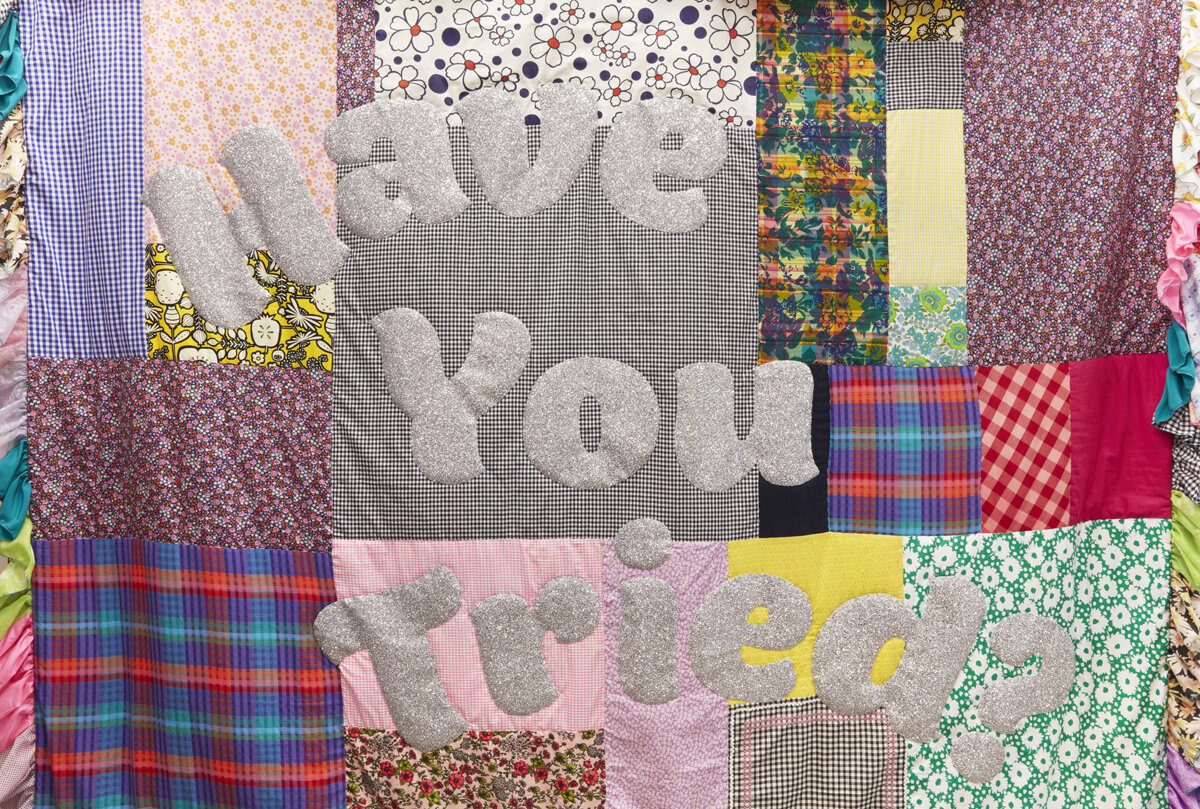
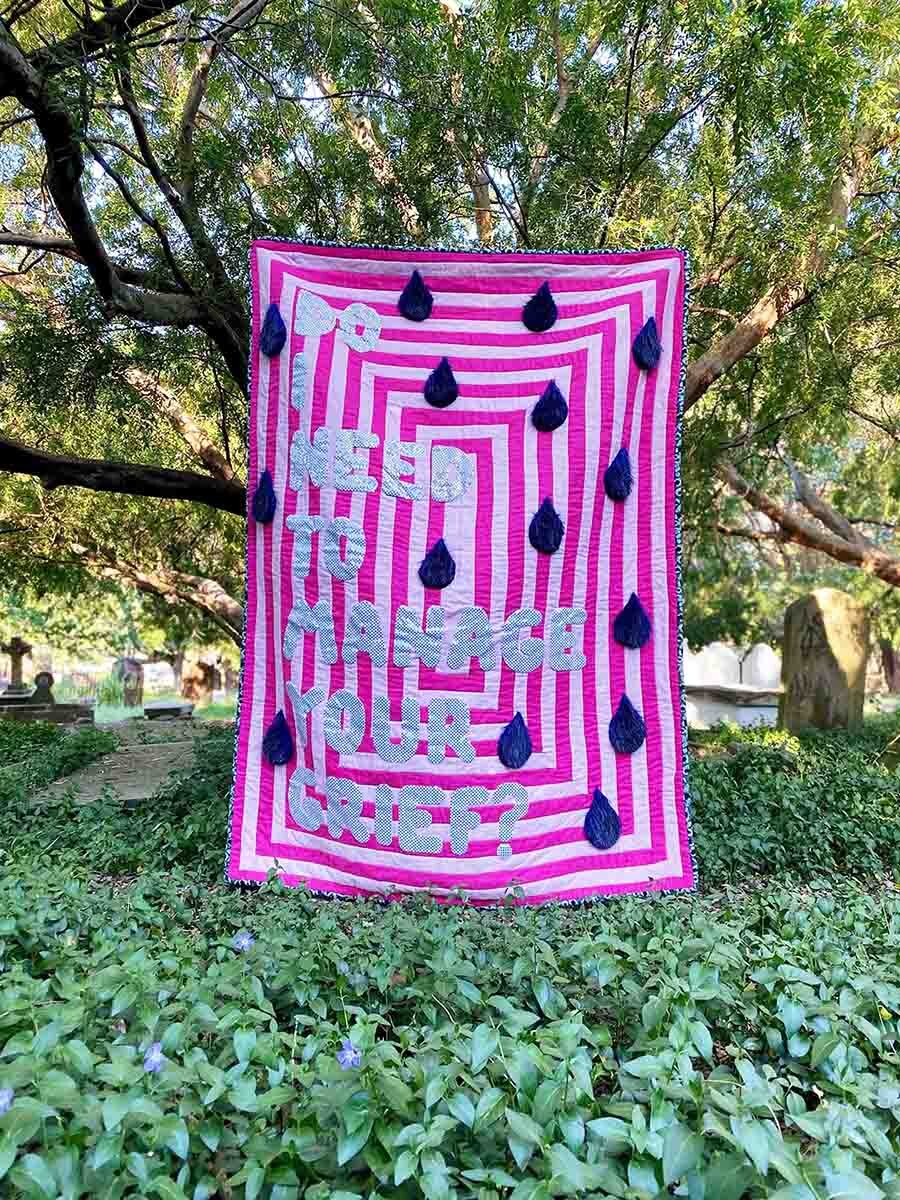
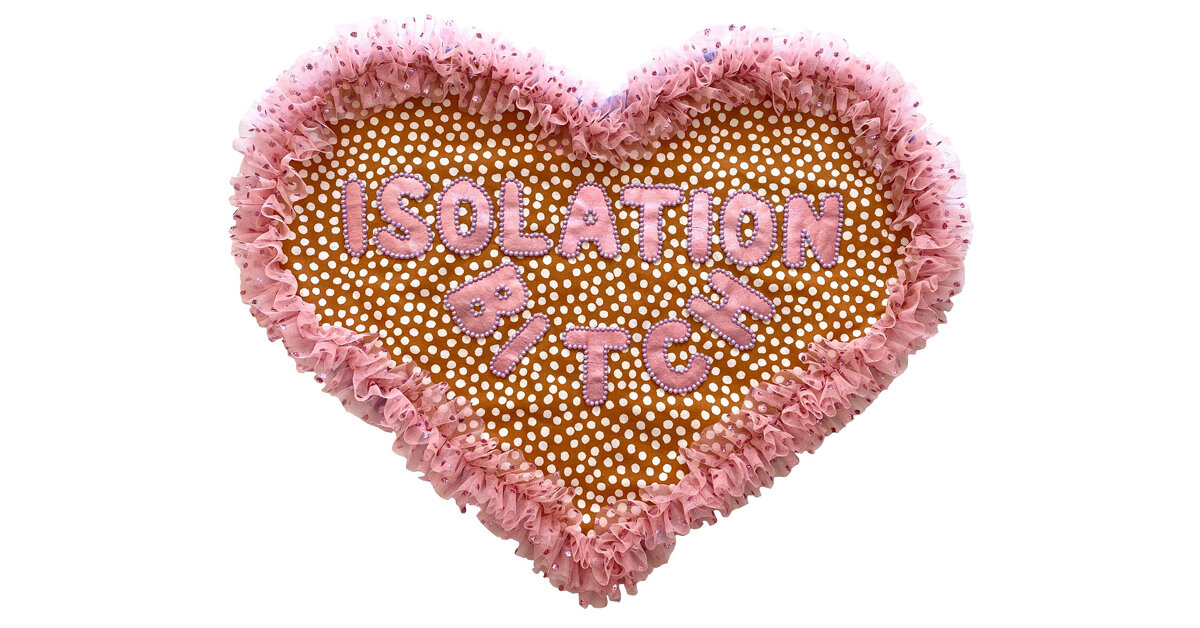

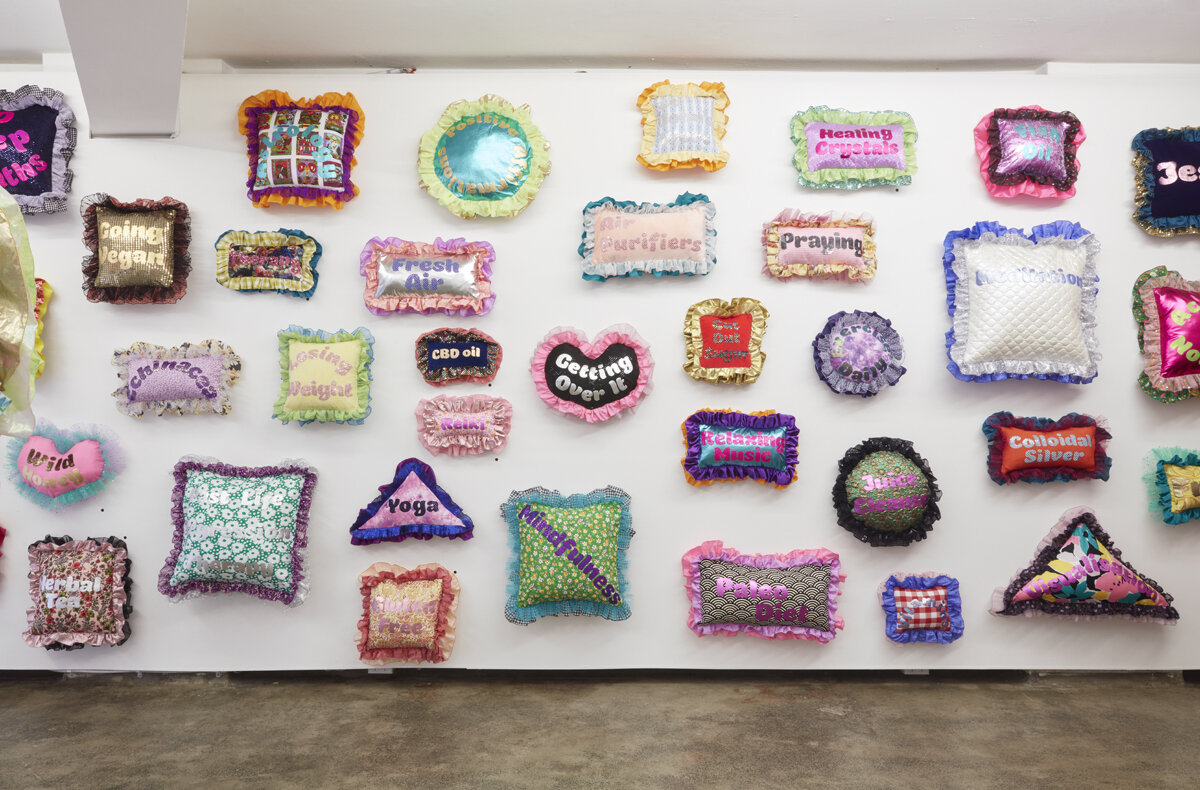
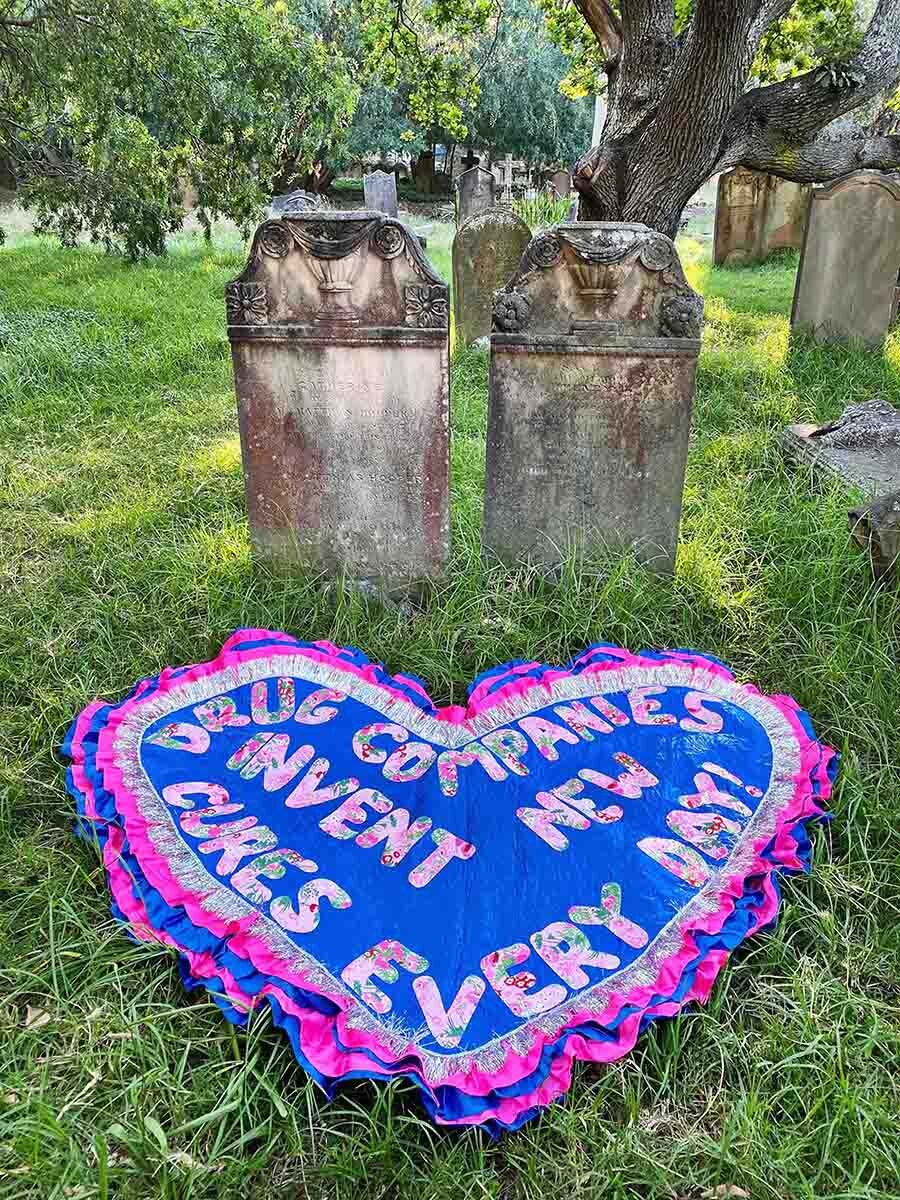
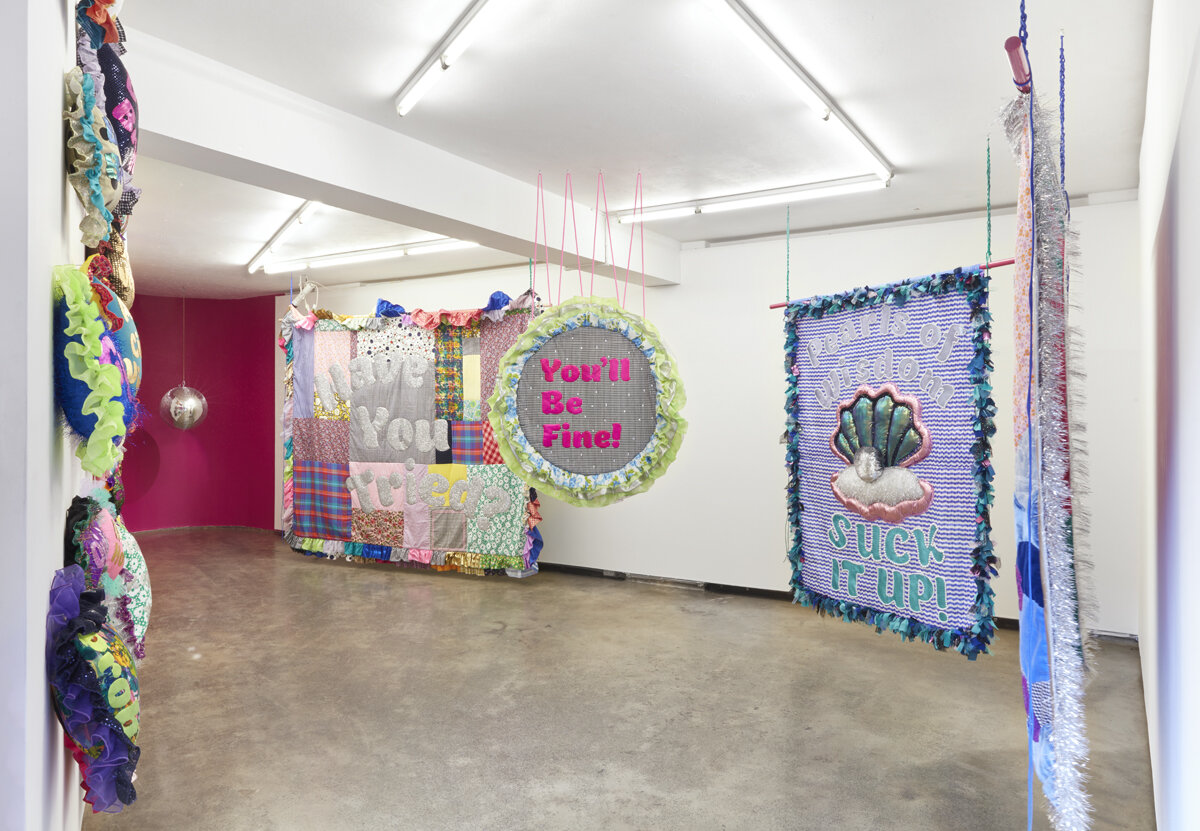



The Firstdraft Census is Firstdraft’s annual stakeholder survey for 2024. Firstdraft is growing and we want to hear from you during this period of change.